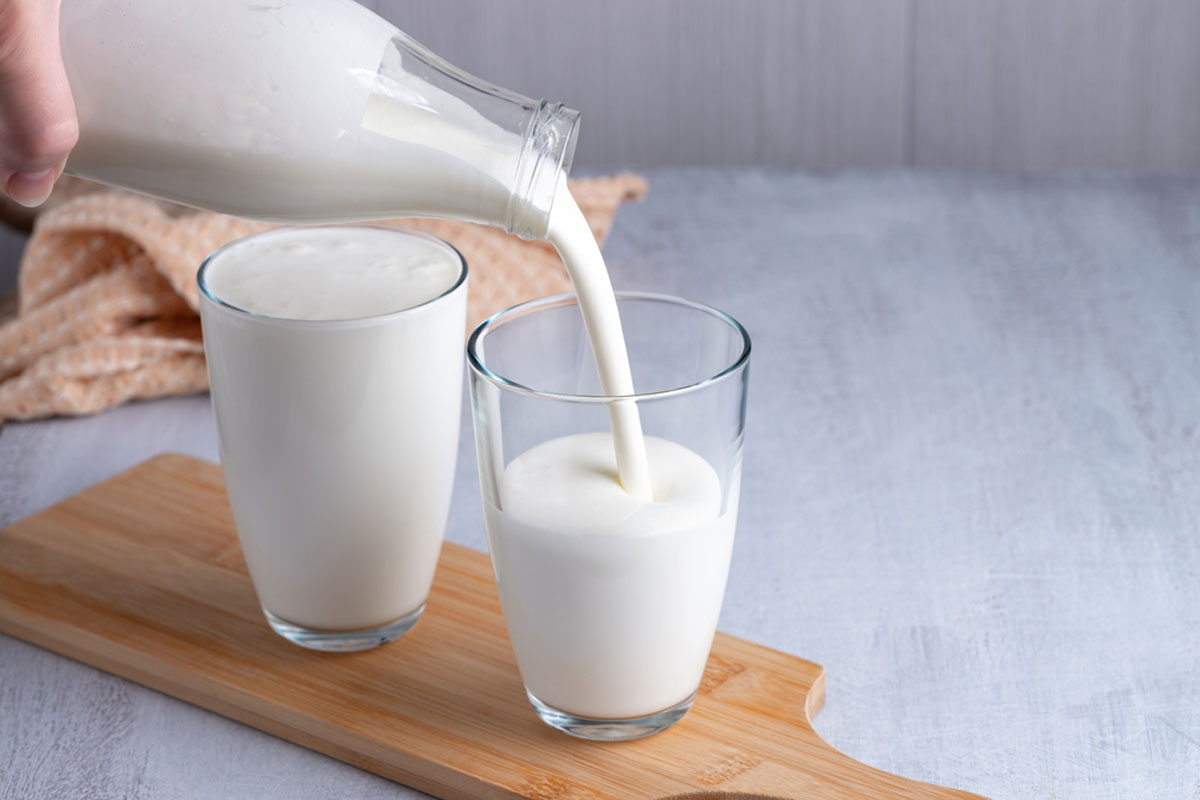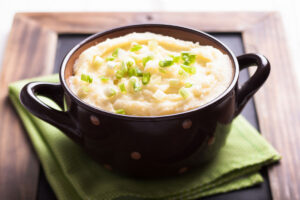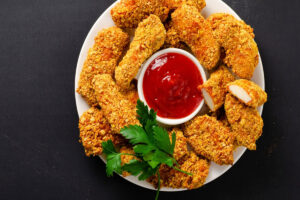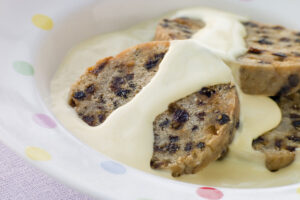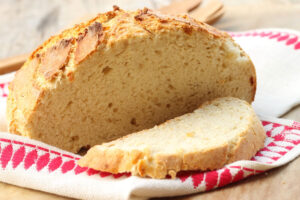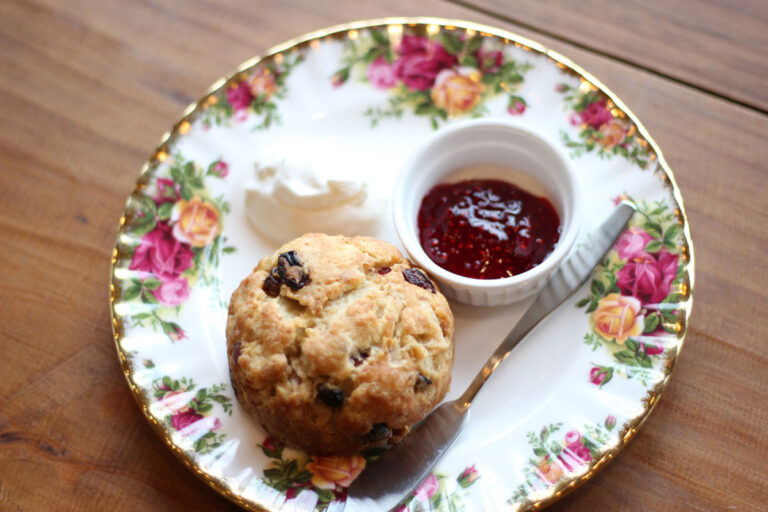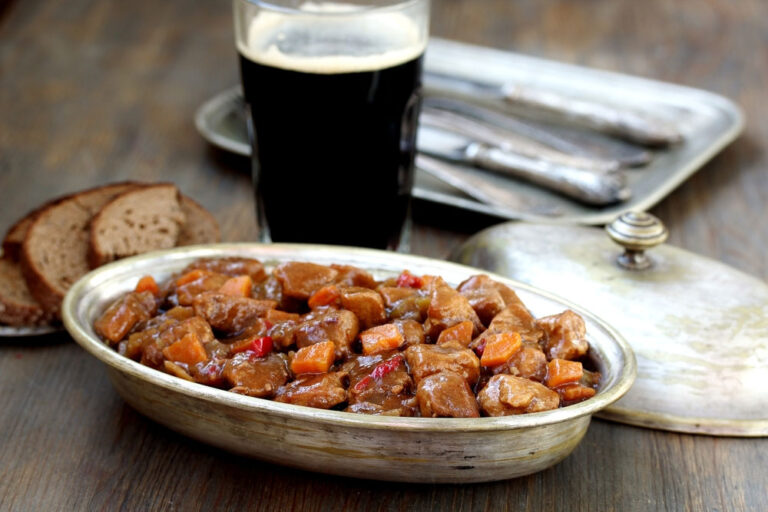The Heart of Irish Tradition
Buttermilk holds a cherished place in Ireland’s culinary heritage, deeply intertwined with the country’s history, culture, and way of life. For centuries, this humble byproduct of butter-making has been a cornerstone of Irish cooking, celebrated for its versatility and unique flavor.
Historically, buttermilk was a staple in Irish households, particularly among rural communities. In an era when food preservation was a challenge, buttermilk became a practical solution, offering a nutritious and long-lasting ingredient. It was often consumed as a drink, used in soups, or baked into traditional bread.
One of the most iconic uses of buttermilk in Ireland is in the making of soda bread. This simple yet essential recipe, combining flour, baking soda, salt, and buttermilk, has stood the test of time. The buttermilk not only leavens the bread but also lends it a distinct tangy flavor that has become synonymous with Irish baking.
Beyond its role in the kitchen, buttermilk reflects the Irish ethos of resourcefulness and respect for nature. By transforming leftover cream into butter and utilizing the resulting liquid, nothing went to waste—a testament to the ingenuity of Irish farmers and cooks.
The Science of Buttermilk
Buttermilk’s charm isn’t just in its rich history; it’s also in its fascinating chemistry. Despite being a byproduct of butter-making, buttermilk boasts unique properties that make it indispensable in cooking and baking. Understanding these qualities helps explain why it has been a cornerstone of Irish cuisine for centuries.
Traditional buttermilk, the liquid left behind after churning cream into butter, contains lactic acid, a natural byproduct of fermentation. This lactic acid is what gives buttermilk its signature tangy flavor and slightly thicker consistency. Today, most commercially available buttermilk is cultured, meaning it’s made by adding lactic acid bacteria to milk, mimicking the fermentation process of old.
The acidity of buttermilk is a key player in its culinary versatility. It reacts with baking soda to create carbon dioxide bubbles, which help baked goods rise. This is why buttermilk is a vital ingredient in recipes like Irish soda bread, giving it a light, tender texture despite the absence of yeast.
Additionally, the acidity in buttermilk acts as a natural tenderizer for proteins. This property makes it an ideal ingredient for marinating meats, as it breaks down tough fibers and enhances flavor without overpowering the dish.
Buttermilk’s low-fat content, another of its defining characteristics, also makes it a healthier alternative to cream in many recipes. Despite being low in fat, it retains a creamy richness, adding depth to dishes without the heaviness of full-fat dairy products.
Buttermilk in Irish Baking Traditions
In Ireland, baking is more than a culinary skill; it’s a cherished tradition passed down through generations. At the heart of this tradition is buttermilk, an ingredient that has shaped some of the country’s most iconic baked goods.
Perhaps the most famous example is Irish soda bread, a simple yet versatile staple found in nearly every Irish home. Traditionally made with just four ingredients—flour, baking soda, salt, and buttermilk—it’s a testament to the ingenuity of Irish cooks who relied on what was readily available. The acidity of the buttermilk reacts with the baking soda to create a natural leavening agent, producing a soft, fluffy texture without the need for yeast.
Buttermilk is also the secret behind the tender crumb of brown bread, another beloved Irish classic. Made with wholemeal flour and often enriched with oats or seeds, this hearty bread pairs perfectly with soups, stews, and, of course, a generous slathering of butter.
Beyond bread, buttermilk adds depth and richness to a variety of baked goods, from scones to cakes. Its tangy flavor complements the sweetness of Irish fruit breads, like barmbrack, and helps create moist, flavorful pastries.
In rural Ireland, baking with buttermilk wasn’t just about creating delicious food—it was a way to make use of every part of the dairy process. By turning what might have been discarded into a key ingredient, Irish families showcased their resourcefulness and respect for nature’s bounty.
Buttermilk Beyond Baking
While buttermilk is renowned for its role in Irish baking, its versatility extends far beyond bread and pastries. In traditional Irish cuisine, this tangy, creamy liquid has been used to elevate a wide range of savory dishes and even beverages, showcasing its unique flavor and practicality.
One of buttermilk’s classic uses in Ireland is as a marinade for meats and poultry. Its natural acidity tenderizes proteins, making dishes like buttermilk-soaked chicken or pork both flavorful and succulent. This technique has been particularly popular for enhancing the texture of tougher cuts of meat, a practice rooted in the resourcefulness of rural Irish households.
In soups and stews, buttermilk adds a tangy depth that balances rich flavors. For example, buttermilk-based soups are a comforting option, often enriched with fresh herbs, potatoes, or leeks, reflecting the simplicity and heartiness of Irish cooking.
Buttermilk has also found its way into salad dressings and sauces, adding creaminess without the heaviness of full-fat alternatives. It pairs beautifully with fresh greens, herbs, and citrus, creating light yet flavorful accompaniments.
In addition to its culinary applications, buttermilk has long been enjoyed as a refreshing drink, especially in rural Ireland. It was often served chilled on warm days or paired with simple meals for a nutritious boost. This tradition, while less common today, speaks to buttermilk’s significance in daily life as both sustenance and comfort.
Buttermilk in Modern Irish Cuisine
While buttermilk is deeply rooted in Ireland’s culinary traditions, its role in modern Irish cuisine remains as vibrant and inspiring as ever. Chefs and home cooks alike have embraced this timeless ingredient, finding new and innovative ways to incorporate its unique flavor and properties into contemporary dishes.
In recent years, artisanal buttermilk has gained popularity, with local dairies producing high-quality versions that highlight the rich, tangy character of traditional buttermilk. These premium products are celebrated not only for their taste but also for their connection to Ireland’s agricultural heritage.
Modern Irish chefs frequently use buttermilk to add a twist to classic recipes. For example, buttermilk panna cotta has become a favorite dessert, where its subtle acidity balances the sweetness of cream and sugar. Similarly, buttermilk is often used in batters for fish or vegetables, creating light, crispy coatings with a distinctive flavor.
Buttermilk’s versatility has also made it a favorite in contemporary baking trends. It’s a key ingredient in fluffy pancakes, waffles, and biscuits, elevating these dishes with its tangy profile. Additionally, buttermilk ice cream has emerged as a unique treat, offering a refreshing alternative to traditional creamy flavors.
Beyond its culinary uses, buttermilk continues to symbolize the Irish ethos of sustainability and respect for nature. Its resurgence in modern cooking reflects a renewed appreciation for ingredients that are both practical and flavorful.
From its humble beginnings in rural kitchens to its celebrated role in today’s gastronomic scene, buttermilk remains a beloved part of Ireland’s food culture. It’s a reminder that even the simplest ingredients can inspire creativity and connect us to our roots, ensuring this versatile staple will continue to enrich Irish cuisine for generations to come.
BUTTERMILK MASHED POTATOES
Description: Buttermilk mashed potatoes are a tangy twist on the...
Read MoreBUTTERMILK CHICKEN TENDERS
Description: Crispy on the outside and tender on the inside,...
Read MoreSPOTTED DOG PUDDING
Description: Spotted Dog Pudding is a classic Irish dessert, reminiscent...
Read MoreIRISH SODA BREAD
Description: A traditional Irish bread made with baking soda instead...
Read More



